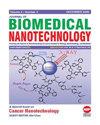Polymerase Chain Reaction Cleaner with Antibacterial Effect and Faster Elimination of Nucleic Acid Aerosol Pollution
IF 2.9
4区 医学
Q1 Medicine
引用次数: 0
Abstract
With advancement of nucleic acid detection technology, most universities, biological testing companies, and hospitals have Polymerase Chain Reaction (PCR) laboratories. PCR detection technology is the core technology for nucleic acid detection. When nucleic acid detection is performed in a PCR laboratory, nucleic acid aerosol samples are often dispersed to the environment in the form of aerosols. At this time, there will be some nucleic acid contamination in the PCR laboratory, resulting in false positive samples. The purpose of this paper is to propose a new type of nucleic acid pollution scavenger called PCR Cleaner. Firstly, the best ratio of PCR Cleaner was obtained by a control experiment, and then the antibacterial test for the PCR Cleaner was carried by comparing the nucleic acid pollution removal efficiency of different ratios of PCR Cleaner and common nucleic acid pollution scavenger on the surface and in the air. Experiment results showed that, the removal efficiency of PCR Cleaner on the surface of nucleic acid was much higher than that of alcohol and aqueous solution. Its effect was good enough when compared to the two commonly used nucleic acid pollution scavengers (DNA/RNA-ExitusPlus and PCR clean). The antibacterial and bacteriostatic PCR Cleaner can significantly inhibit the growth of high concentration of E. coli, and can also completely inhibit the low concentration of E. coli.具有抗菌效果并能更快消除核酸气溶胶污染的聚合酶链式反应清洁剂
随着核酸检测技术的发展,大多数大学、生物检测公司和医院都拥有聚合酶链式反应(PCR)实验室。PCR 检测技术是核酸检测的核心技术。在 PCR 实验室进行核酸检测时,核酸气溶胶样本往往会以气溶胶的形式散布到环境中。此时,PCR 实验室中会出现一些核酸污染,从而导致样本出现假阳性。本文旨在提出一种新型核酸污染清除剂--PCR Cleaner。首先,通过对照实验获得了 PCR Cleaner 的最佳配比,然后通过比较 PCR Cleaner 和普通核酸污染清除剂不同配比对物体表面和空气中核酸污染的去除效率,对 PCR Cleaner 进行了抗菌测试。实验结果表明,PCR Cleaner 对核酸表面的去除率远远高于酒精和水溶液。与两种常用的核酸污染清除剂(DNA/RNA-ExitusPlus 和 PCR Clean)相比,其效果也足够好。抗菌抑菌型 PCR Cleaner 能显著抑制高浓度大肠杆菌的生长,也能完全抑制低浓度大肠杆菌的生长。
本文章由计算机程序翻译,如有差异,请以英文原文为准。
求助全文
约1分钟内获得全文
求助全文
来源期刊
CiteScore
4.30
自引率
17.20%
发文量
145
审稿时长
2.3 months
期刊介绍:
Information not localized

 求助内容:
求助内容: 应助结果提醒方式:
应助结果提醒方式:


